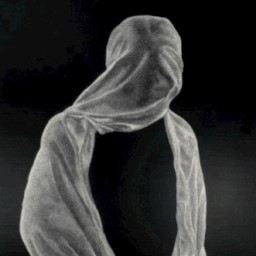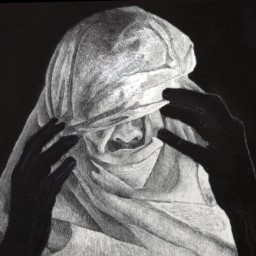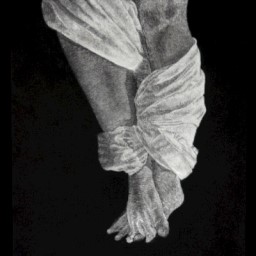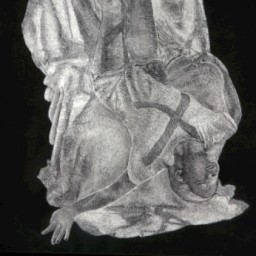Lachlan Oscar Martinez
St Ignatius' College
CONCEAL, CONFESS
Drawing
Scratchboard
My body of work explores the paradox of concealment and confession. The concept for the work is that concealment, under fabric, covers the subject's insecurities. Initially, the veil of fabric grants a confidence to be the subject. In the space of the work, the subject is represented as becoming comfortable enough to confess her form. My artmaking practice included composing reference photos, ensuring specific lighting to highlight all 3D components in order to represent insecurities. Additionally, the medium of scratch art complements my concept as each inerasable scratch holds a sense of finality, confessing my intentions and my subject's insecurities.
My artmaking practice has been influenced by the study and interpretation of the following artists: Albrecht Dürer, Francisco de Goya, William Blake.
Marker's Commentary
Conceal, Confess references rich traditions within the visual arts from the classical age to more contemporary ideas explored by artists such as Jean Claude and Christo to inform a suite of works that synthesise their material execution with conceptual intent. Working into scratchboard, the meticulously controlled images and ideas emerge, revealing the concealed to the audience, by subtracting from the surface. The technique synthesises the conceptual intention with the material execution. A narrative of the struggle to possess confidence in our bodies unfolds in the work - the veiled subject presents in closed stance to begin the series and we see the tension in the cropped images as they struggle to release themselves from the bonds of expectation. This is symbolically referenced in the drapery morphing into a stance of confidence and comfort in one’s own skin in the final panel. Subtle references to classical sculptures of the past are made in the drapery and postures, while we see a knowledge of the artworld in references made to Dali’s ‘The Lovers’. The conceptual and psychological play of revealing and concealing is significant to many works, including the staging of narratives found in photography and film genres.





